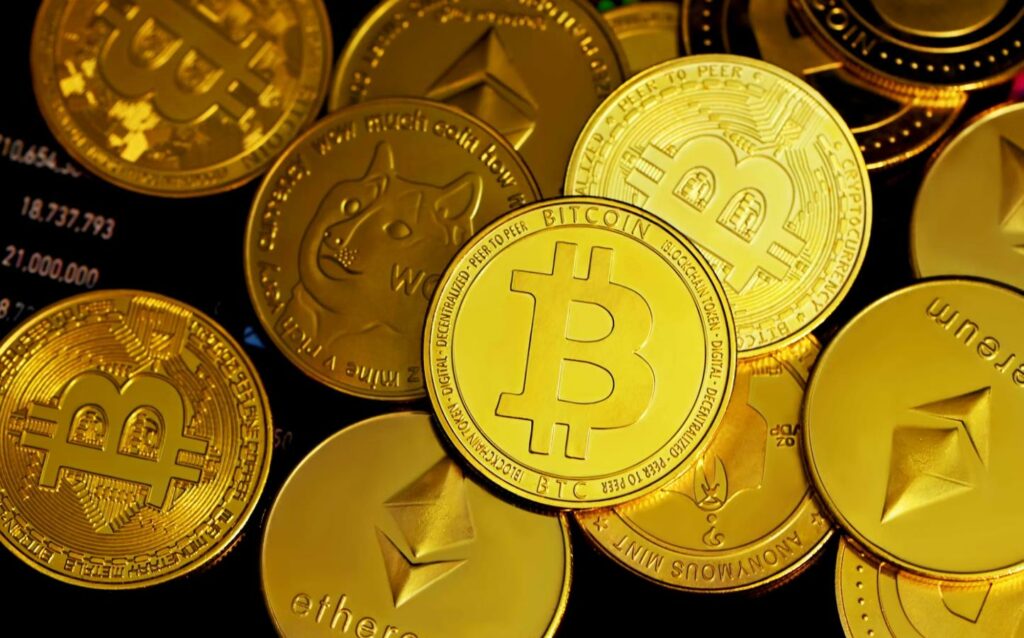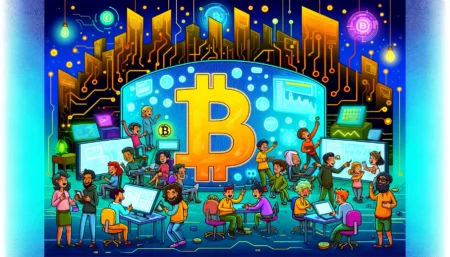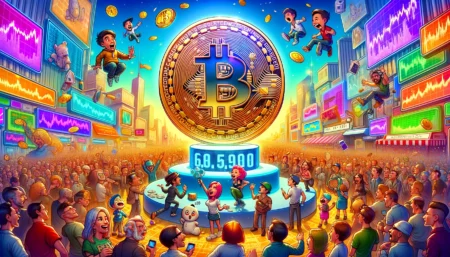With Bitcoin approaching $70,000 (€61,800), “memecoins” worth billions, Wall Street-listed coinbases and China’s sweeping crackdown on mining, 2021 is arguably the craziest year for cryptocurrencies, even in the industry The same is true by turbulent standards.
Digital assets started the year with a flood of cash from whales and retail investors. Since then, Bitcoin BTC 2.06% and its ilk have rarely left the spotlight, and the language of cryptocurrencies has become ingrained in investors’ lexicons.
Here’s a look at some of the key trends that have dominated cryptocurrencies this year.
Bitcoin is still number one
The original cryptocurrency holds the crown as the largest and best-known coin — despite a slew of challengers biting its heels.
Bitcoin surged more than 120% from Jan. 1, hitting a record of nearly $65,000 (€57,400) in mid-April. It has been fueled by a tsunami of cash from institutional investors, the growing acceptance of big companies like Tesla and Mastercard, and the growing embrace of Wall Street banks.
Fueling investor interest is bitcoin’s purported inflation-proof properties — its supply is capped — as record stimulus packages fuel price gains. With record-low interest rates, the promise of quick yields, and easier access through fast-developing infrastructure, also helped lure buyers.
Major U.S. exchange Coinbase listed in April with a market value of $86 billion (75.9 billion euros), the largest deal by a cryptocurrency company to date and a symbol of bitcoin’s mainstream popularity.
“It’s got into the realm of being traded by people who bet on Treasuries and stocks,” said Richard Galvin of Digital Capital Asset Management, a cryptocurrency fund. “
However, the coin remains volatile. It slid 35% in May before surging to a record high of $69,000 (€60,900) in November as inflation rose sharply in Europe and the United States.
Famous skeptics remain, with JPMorgan Chase boss Jamie Dimon calling it “worthless.”
The rise of the MeMe coin
Even though Bitcoin is still the first choice for investors to get involved in cryptocurrencies, there will be a large number of new investors entering the space because of meme tokens.
“Memecoins” – a collection of decentralized coins ranging from Dogecoin DOGE 5.85% and Shiba Inu to Squid Game with roots in web culture – often have little practical use.
Launched in 2013 as a derivative of Bitcoin, Dogecoin surged more than 12,000% to an all-time high in May before sliding nearly 80% in mid-December. Shiba inu is a Japanese canine breed like Dogecoin, which briefly squeezed into the top 10 digital currencies.
The memecoin phenomenon has been linked to the “War on Wall Street” movement, where retail traders piled online to buy stocks like GameStop, squeezing hedge funds’ short positions.
Many traders — who are often stuck at home with spare cash during the coronavirus lockdown — turned to investing in cryptocurrencies, even as regulators warned of volatility.
“It’s all about financial mobilization,” said Joseph Edwards, head of research at cryptocurrency broker Enigma Securities.
“While assets like DOGE and SHIB may be purely speculative in themselves, the money that goes into them comes from the ‘why can’t I make money with my money, savings’ instinct.”
Supervision: The Elephant in the Room
As money pours into cryptocurrencies, regulators are concerned about what they believe could facilitate money laundering and threaten global financial stability.
Regulators have long been skeptical of cryptocurrencies, a rebel technology invented to disrupt traditional finance, demanding more power over the industry, with some warning consumers of volatility.
As the new rules loom, cryptocurrency markets are spooked by the risk of a possible crackdown.
When Beijing imposed restrictions on cryptocurrencies in May, bitcoin fell nearly 50%, dragging down the broader market.
Stephen Kelso, head of global markets at ITI Capital, said: “Regulatory risk is everything because these are the rules of the road by which people live and die in financial services.”
“The regulators are making good progress and they are catching up.”
NFTs
As the memecoin trade took off, another once obscure corner of the cryptocurrency complex has also caught the eye.
NFTs — strings of code stored on a blockchain digital ledger that represent unique ownership of artwork, videos, and even tweets — explode in 2021.
In March, a digital artwork by American artist Beeple sold for nearly $70 million (€61.7 million) at Christie’s, making it one of the three most expensive works by a living artist at auction.
This auction heralds a scramble for NFTs.
Sales in the third quarter reached $10.7 billion (9.4 billion euros), a more than eight-fold increase from the previous three months. As trading volumes peaked in August, prices in some national trusts rose rapidly, and speculators could “flip” them for profit within days or even hours.
NFT sales on OpenSea
A surge in cryptocurrency prices, spawning a new class of crypto-wealth investors — and predictions of a future online virtual world with NFTs taking center stage — helped fuel the boom. The popularity of cryptocurrencies and NFTs may also be linked to a decline in social mobility, as soaring prices put traditional assets such as homes out of reach, said John Egan, CEO of L’Atelier, a research firm owned by BNP Paribas. And, young people are attracted by its potential for quick returns.
While some of the world’s top brands, from Coca-Cola to Burberry, have sold NFTs, still imperfect regulation means large investors have largely shunned them.
“I don’t see a situation where licensed financial institutions are actively and proactively trading (these) digital assets in the next three years,” Egan said.






